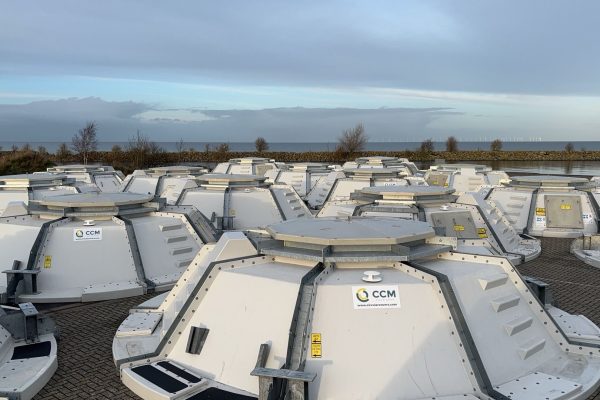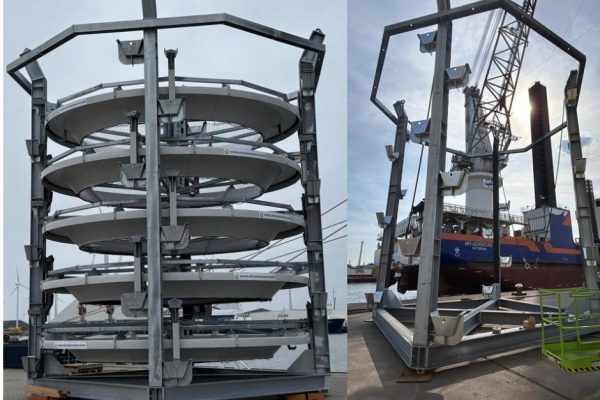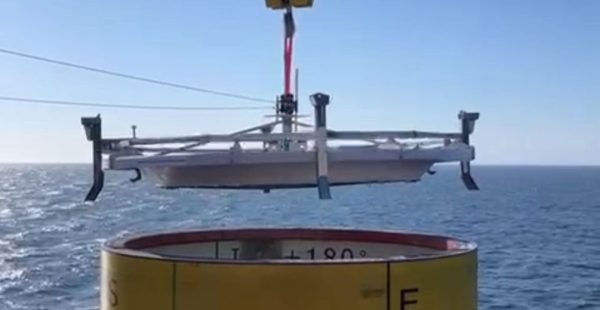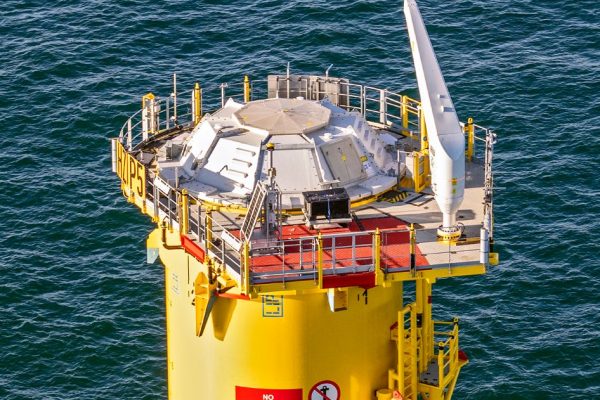


In the offshore wind industry, reuse is key to a sustainable future. That’s why we have developed a reusable flange cover that helps extend the service life of critical interfaces while reducing waste.
This new cover type has been produced for RWE’s Thor offshore wind farm in Denmark and is designed for multiple re-uses. In 2026, the flange covers will be redeployed during the construction of a subsequent offshore wind farm—demonstrating practical circularity in day-to-day offshore operations.

Our composite monopile cover is an innovative, sustainable solution made from fibre-reinforced polyester (FRP). Its construction uses modular FRP panels that resemble pie slices. This modularity allows the top panels to be reused across all monopile diameters currently on the market. Without a cover, the internal work platform can become wet and slippery from rain and spray, and may be soiled by bird faeces. Our covers help maintain a safer, healthier working environment for offshore personnel.
We have previously successfully supplied sustainable monopile covers for the Hollandse Kust Zuid offshore wind farm. After use, the covers were returned and are now being reused on Thor offhore wind farm, underscoring the product’s circularity and sustainability.

To date, the offshore industry has used three types of monopile covers: tent, steel and aluminium. Each has drawbacks. Tent covers are unsuitable in winter conditions and, at high wind speeds, risk being dislodged, entering the sea and leaving the monopile unprotected. Steel and aluminium covers carry high fabrication costs, and recycling is energy-intensive—aluminium in particular. Because monopile diameters often vary by project, these covers have typically not been reused on subsequent projects.
By contrast, our composite monopile cover offers robust weather resistance, lower production cost, and true reusability across varying diameters—delivering the circular, practical solution the industry has been missing.
Cost-effective — Lower production costs than aluminium or steel monopile covers.
Translucent — Panels are made from translucent fibre-reinforced polyester (FRP), providing natural daylight to the airtight platform and reducing the need to carry heavy-duty battery lighting when working inside the monopile. Panels are connected with metal strips and bolted together, and access hatches are integrated into the design.
Safe and healthy — The covers are water- and dirt-resistant, helping to minimise the risk of mould growth and condensation inside the monopile above the airtight platform.
User-friendly — Well-ventilated for a clean, dry workspace. The hatch can be safely opened by a single operator.
Durable — Designed to withstand high winds and reduce the risk of covers being dislodged and entering the sea, a risk associated with tent-style covers in severe weather.
Circular — To minimise environmental footprint, the covers are reusable for at least 10 years, avoiding immediate recycling that is common for aluminium or steel covers and which consumes substantial energy. Panels can be quickly dismounted and shipped worldwide in standard sea containers for the next project.
Reusable — The top panels can be reused across all offshore monopile diameters currently on the market. Typical top diameters range from 6–8 m, and the concept is designed to fit this range. Covers can be tailor-made by using longer or shorter tapered sections to match the exact diameter for the next project. The number of hatches is also customisable—it’s simply a matter of exchanging panels.